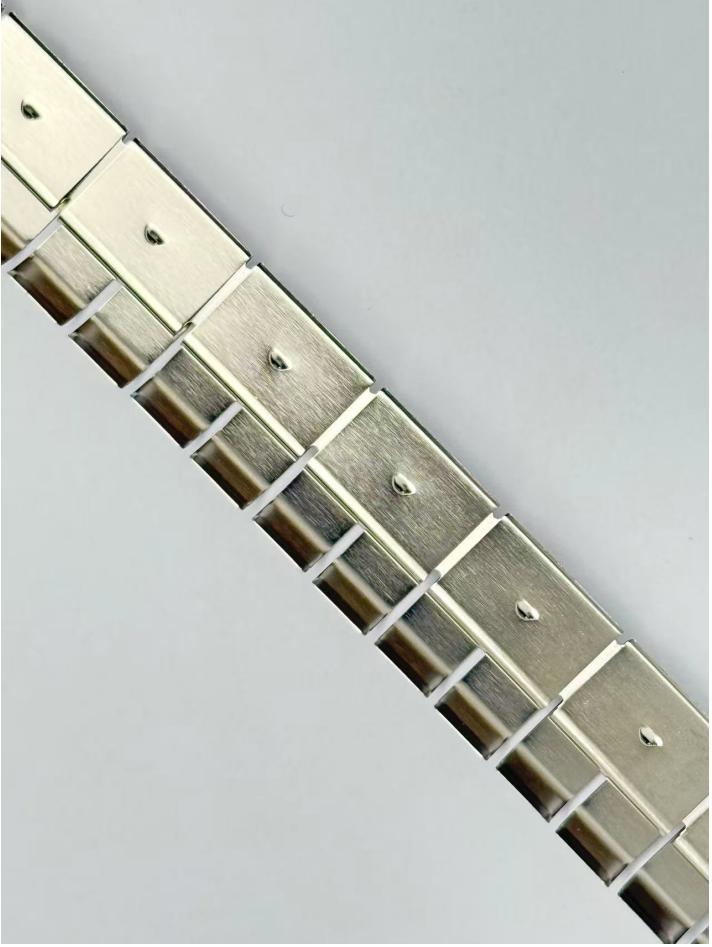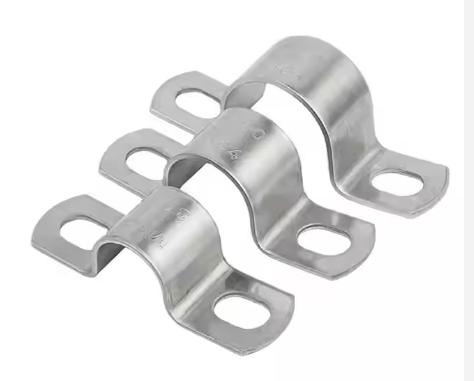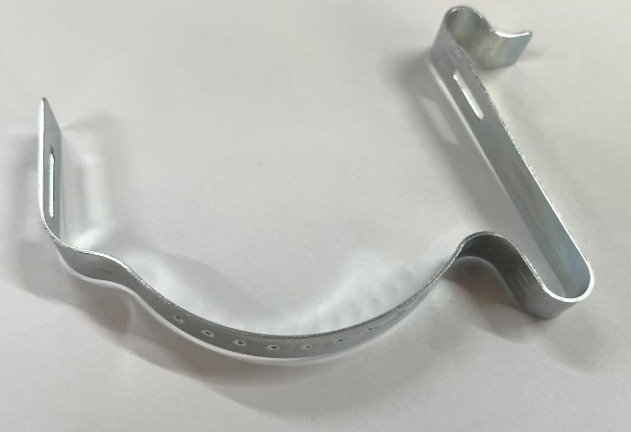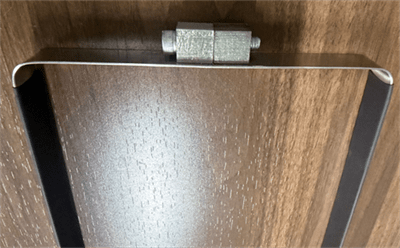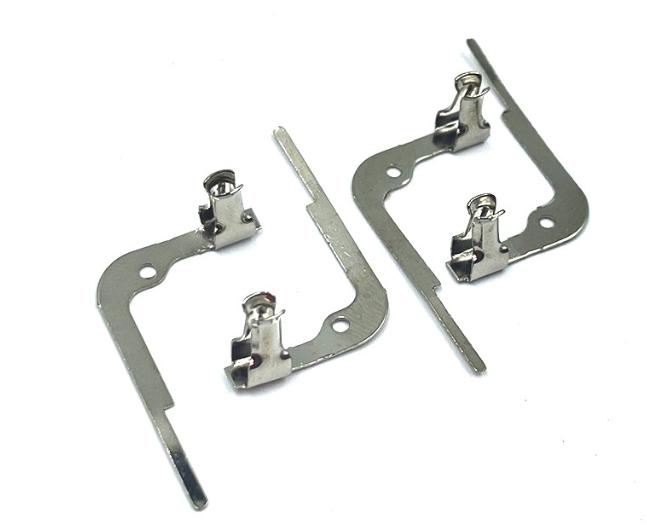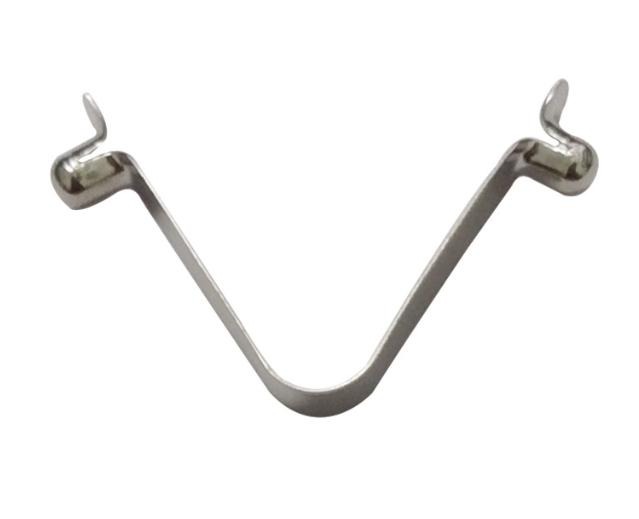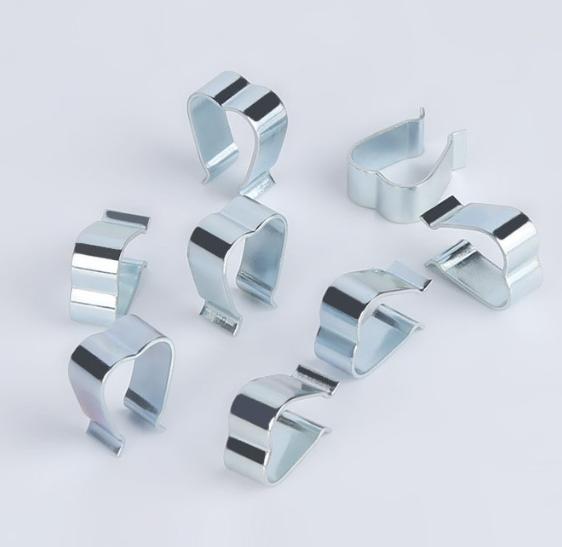Hot Stamping for Automotive Safety Components
The automobile industry continues to evolve to enhance safety of vehicle, fuel efficiency and performance. One of the most critical advancements in manufacturing is hot stamping, a technique that is used to produce ultra-high-strength components. This stamping process is especially important for automotive safety components, such as A-pillars, B-pillars, door beams roof rails, bumpers, etc, which must be able to withstand high-impact collisions while minimizing weight.
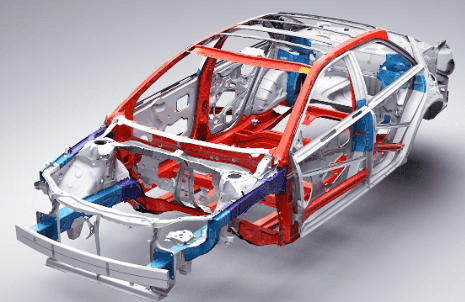
Table of Contents
Understanding Hot Stamping
Hot stamping is also referred to in press-hardening. It is a thermomechanical method that involves heating an blank steel (usually made of boron) to 900 degrees Celsius and then creating a die and then cooling it rapidly inside the press. The process changes the microstructure of the steel into martensite, which significantly increases the strength of the steel, often more than 1500 MPa.
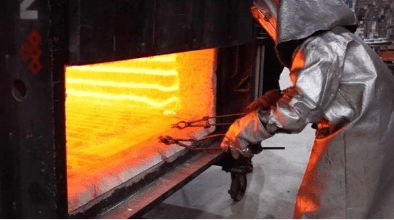
In contrast to cold stamping techniques which can cause cracking in ultra-high-strength material. hot stamping permits the production of safe geometries, while also preserving the integrity of the material.
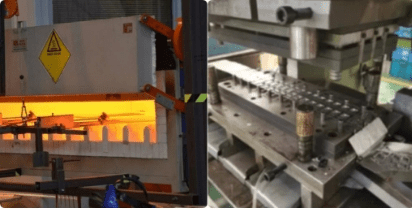
Why Hot Stamping is Essential for Automotive Safety Components
1. Delivering Ultra-High–Strength
The primary reason for hot stamping’s value is the ability to produce parts that have a tensile strength more than 1,500 MPa. This strength is essential to ensure the structure of a vehicle in the event of collisions. Parts like A-pillars, B-pillars and side impact beams have to resist deformation to safeguard the cabin of the passenger, hot stamping makes sure they have the strength required to absorb and redirect collision energy efficiently.
2. Enabling Weight Reduction Without Sacrificing Safety
Modern vehicles are faced with the double challenge of increasing efficiency in fuel consumption while meeting the strictest safety standards in crashes. Hot stamping can produce smaller, light steel pieces without sacrificing mechanical performance.
By decreasing the weight of critical safety components, while maintaining their strength, manufacturers are able to reduce the overall weight of a vehicle. This can lead to improved fuel efficiency for traditional vehicles and a longer range for electric vehicles.
3. Making Complex Geometries with Precision
Automotive designs today require complex components that fit into smaller and more efficient space. Hot stamping permits hot steel to be formed into extremely complex geometries that are shaped with precision for the automotive industry. This allows designers to design components that do not just can be firmly integrated into the vehicle’s frame, but also provide high-quality crash protection. This method is particularly beneficial when it comes to components that have variable cross-sections, deep draws or with tight tolerances.
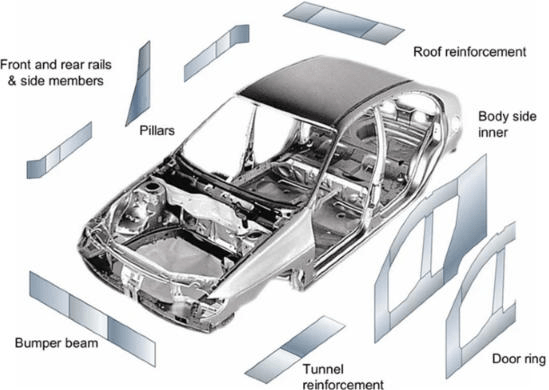
4. Improving Structural Consistency and Reliability
Safety performance is heavily dependent on the reliability and consistency of each manufactured component. Hot stamping provides an excellent level of dimensional precision and uniform mechanical properties across huge production sizes. The process of quenching the in-die die ensures the steel’s final microstructure, eliminating any variations and ensuring that every component will perform as expected in the event of a crash.
5. Allowing Strategic Energy Absorption with Tailored Properties
The advancements in hot stamping allow manufacturers to create components that have custom mechanical properties. By employing techniques like tailor tempering and customized blanks, manufacturers can create components with zones of different in ductility and hardness. This allows for controlled deformation during an accident, redirecting forces of impact away from the compartment for passengers and absorb energy to the places it is most needed. It is difficult to achieve using traditional stamping.
6. Supporting the Needs of Electric Vehicle Architecture
The shift to electric vehicles (EVs) presents new structural issues. Electric vehicles are generally heavier because of battery systems, which increase the need for light and high-strength safety equipment. Hot stamping helps engineers fulfill these demands without compromising crash-worthiness. It also provides new packaging techniques that help improve the distribution of weight and space within EV platforms.
7. Contributing to Long-Term Sustainability Goals
Hot stamping is not just a way to make better and safer vehicles but helps to promote more sustainable manufacturing methods. Through the use of less dense materials, this process decreases the use of raw materials. Additionally, integrated part design typically reduces the amount of bolted or welded joints, thus reducing the amount of waste and easing assembly. These benefits are compatible with the industry’s larger sustainability goals.
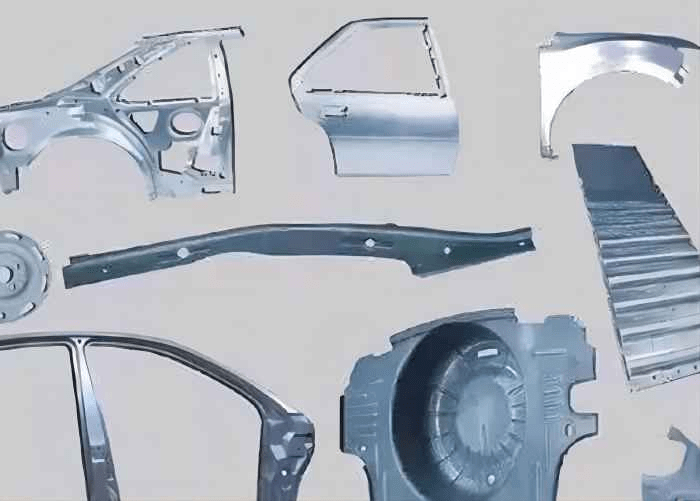
Key Automotive Safety Components Produced by Hot Stamping
1. A-Pillars and B-Pillars
A-pillars and B-pillars are two of the most important structural elements in the frame of a car. They are used to support the roof and are part of the occupant cell which is required to remain in place when a vehicle is rolled over or impacted by a side. Hot stamping allows these pillars to become manufactured with a high strength-to-weight ratio, giving them the strength needed to stop cabin intrusion, while minimising the thickness of the material for weight savings.
2. Roof Rails and Side Sills
Roof rails join the front and back of the vehicle’s top structure and play an essential function in protecting against rollovers. In the same way Side sills (or rocker panels) are the lower portion in the compartment for passengers. They absorb energy from side-impacts. When produced by the process of hot stamping elements have the strength to bear the stress of high loads, thereby enhancing the overall integrity of the vehicle and safety of the occupants.
3. Door Intrusion Beams
In the car’s doors the intrusion beams are made to absorb energy and distribute it when a vehicle is struck by a car. Traditional beams can be prone to deformation or buckle under extreme pressure, however hot-stamped beams resist collapse and retain their the shape even when stressed to the limit. This is crucial in protection of occupants in case of collisions with lateral sides.
4. Bumper Beams
The front and rear beams of the bumper absorb the impact energy during low to mid-speed collisions. They assist in preventing the destruction of other structural parts. Hot stamping permits the manufacture of stronger and thinner bumper beams, which ensures effective energy absorption, without adding burden to your vehicle.
5. Transmission Tunnels and Floor Reinforcements
Its transmission tunnel situated in the middle of the vehicle’s centerline offers structural support and funnels energy for collisions on the sides and front. Floor reinforcements that are hot-stamped complement this by bolstering the body of the vehicle’s underbody. This helps to transfer the impact forces away from the compartment for passengers. These parts are particularly important in crashes that involve many forces in different directions.
6. Cross Members and Load Paths
Cross members and the crash load path connect different parts of the vehicle’s structure, assisting to evenly distribute the impact force. If they are produced using Hot stamping processes, these parts provide the torsional rigidity required to limit the deformation of the chassis during an accident. Their location is critical in steering crash forces away from the vehicle and to areas that are that are designed to withstand impacts.
7. Seat Frames and Reinforcement Brackets
Seats need to remain securely in position during a crash to ensure that airbags and seat belts are effective. The hot-stamped frame of the seat and reinforcement brackets provide structural stability in circumstances of crash, particularly when rear-end collisions are high-impact or rollover situations.
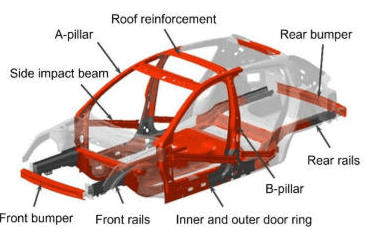
Challenges and Solutions in Hot Stamping for Automotive Safety Components
This chart outlines the key challenges associated with hot stamping for automotive safety components and provides practical solutions being used across the industry.
| Challenge | Description | Solution |
| High Equipment and Tooling Costs | Initial investment in furnaces presses, and dies can be costly. | Utilization of modular designs for tooling and shared manufacturing lines to lower the cost of setting up. |
| Tool Wear Due to High Temperatures | Exposure to high temperatures for a long period can cause the degrading of tooling surfaces. | The use of high-strength metals for dies or sophisticated coatings (e.g. ceramic, Ceramic or carbide coatings). |
| Complex Process Control | The precise temperature and timing control is essential for ensuring consistent results. | Implementation of real-time monitoring in closed-loop systems for control. |
| Limited Material Options | Hot stamping is generally restricted to boron-based steels and certain alloys. | In-progress R&D into new alloys and hybrid hot stamping methods to allow for wider use of the material. |
| Springback and Dimensional Deviations | Incorrect cooling or forming could cause geometric distortions. | Die design optimized, quick in-die quenching and finite element simulations to anticipate the outcome. |
| Energy-Intensive Process | Heating blanks up to 900 degrees requires a lot of energy. | Incorporation of systems for energy recuperation, as well as better insulation of furnaces. |
| Longer Cycle Times Compared to Cold Stamping | The cooling and heating phases increase the production time. | Multi-stage heating systems and parallel heating stations line forming to improve the efficiency of. |
| Joining Hot-Stamped Parts to Other Materials | Materials that are not compatible (e.g. aluminum, composites) can pose bonding problems. | The use of advanced joining techniques like the laser weld, clinching or adhesives. |
| Microcrack Formation During Quenching | Rapid cooling could result in internal stress or cracks. | Improved quenching rate and controlled alloy compositions to lessen the brittleness. |
| Integrating Processes into Existing Lines | Retrofitting hot stamping to the traditional line can prove complicated. | Digital simulations to plan processes. |
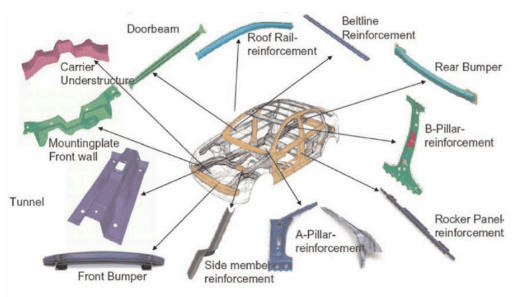
Future Trends in Hot Stamping for Automotive Safety Components
As the automotive industry continues to develop quickly in response to the need for sustainability, electrification and stricter safety standards, hot stamping is undergoing its own transformation.
Integration of Tailored-Property Components
The most exciting developments for hot-stamping has been the creation of custom-property parts. These components incorporate zones of different strength and ductility in the same piece, allowing the precise management of energy in the event of the event of a collision. By incorporating soft zones to control deformation, and more rigid zones for structural protection, customized stamping parts can improve the safety of occupants and enhance the performance of a crash.
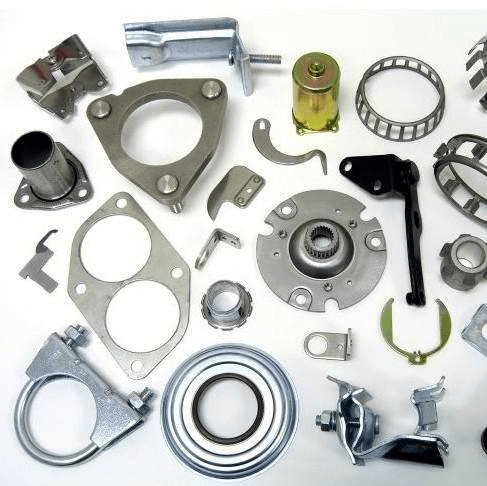
Expanded Material Options Beyond Boron Steel
In the past, hot stamping depended on boron steel for a large portion of the time. But today, the industry is looking at a broader range of materials, such as advanced super-high strength steels (AHSS) or aluminum-steel composite blanks. These new materials have enhanced formability and lighter weight, thereby expanding the possibilities of hot stamping and helping to support methods for reducing weight in electric vehicles.
Electrification-Driven Component Redesign
In the era of electric cars (EVs) are becoming more prevalent automobile manufacturers are considering rethinking the design of their vehicles’ platforms. This includes shifting the position of battery packs, changing routes for load-bearing and incorporating structural reinforcements. Hot stamping is changing accordingly by introducing new die designs and technologies that allow the manufacture of EV-specific security components, such as floor reinforcements, battery enclosures and cross members, which offer security and reduce weight.
Smart Manufacturing and Digital Integration
Future hot stamping technology is becoming linked to Industrial 4.0 technologies. Monitoring in real-time predictive maintenance, and quality control using AI are being added to stamping machines in order to improve efficiency and reduce downtime. Digital twins as well as advanced simulation tools are also employed to optimize the design of dies and predict material behavior which allows for quicker development cycles and better accuracy.
Enhanced Tooling and Thermal Management
To increase efficiency and extend the life of tools, the next hot stamping equipment will include modern tooling materials, enhanced coatings, and better control of thermal heat. High-performance lubricants and rapid cooling circuits and thermally insulated tools will be developed in order to ensure uniformity and decrease time-to-market. These advancements will enable greater production capacity without sacrificing the quality of the part.
Multi-Stage and Inline Processing Innovations
Manufacturers are looking into multiple-stage hot stamping processes which combine heating and cooling, forming, trimming and joining in a seamless inline process. This streamlines handling time as well as eliminates the need for intermediate storage processes which results in increased throughput and lower costs for production. The future hot stamping system will be increasingly geared towards fully automated with continuous operating.
Sustainability and Energy Efficiency Improvements
With increasing focus in reducing emissions of carbon companies in the field of hot-stamping is now focusing on furnaces that use less energy and waste heat recovery and closed loop cooling techniques. Additionally, reducing scrap materials by forming near-net-shapes and smart blank design is now an important aspect. These measures will help in more sustainable manufacturing as well as align with the global environmental standards.
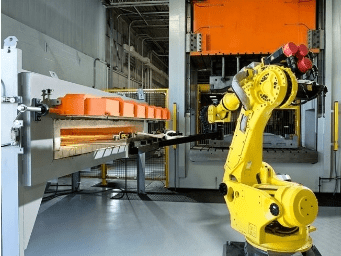
Final Thoughts
The ability of hot stamping to produce ultra–high-strength and lightweight car safety components allows manufacturers to build safer, more efficient, and environmentally responsible vehicles. As vehicle safety standards become stricter and automotive architectures shift toward electrification, hot stamping will become more and more important in ensuring automotive safety and structural integrity.

